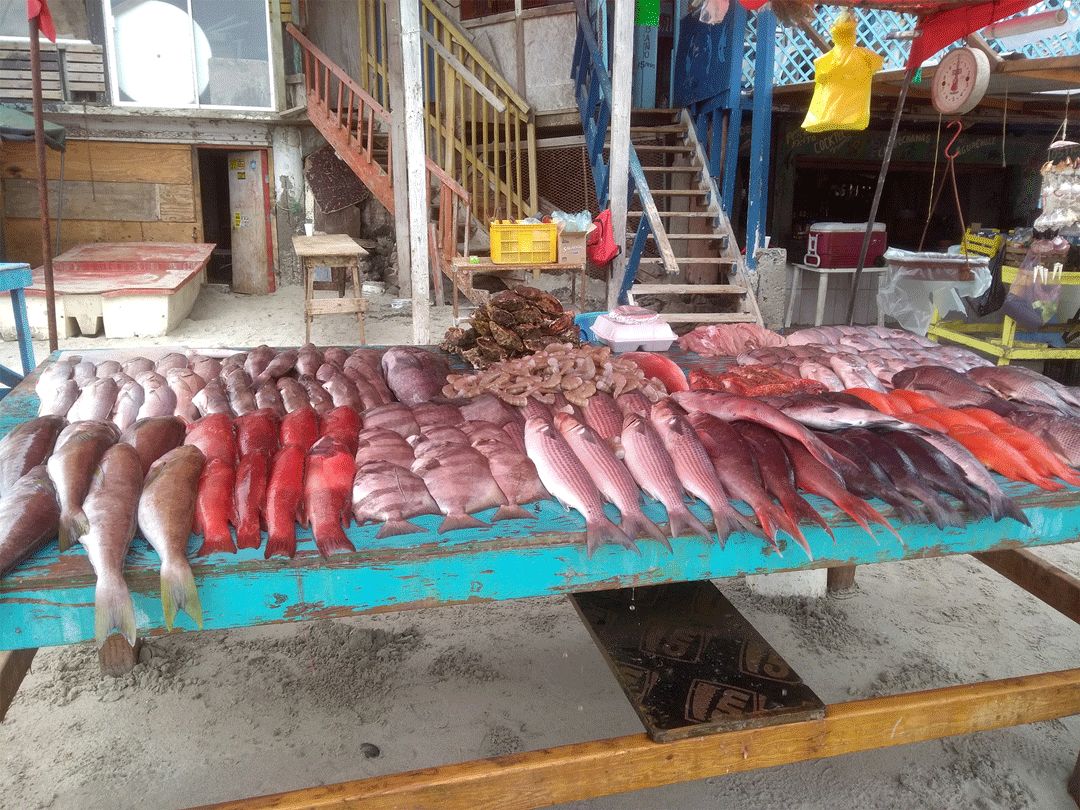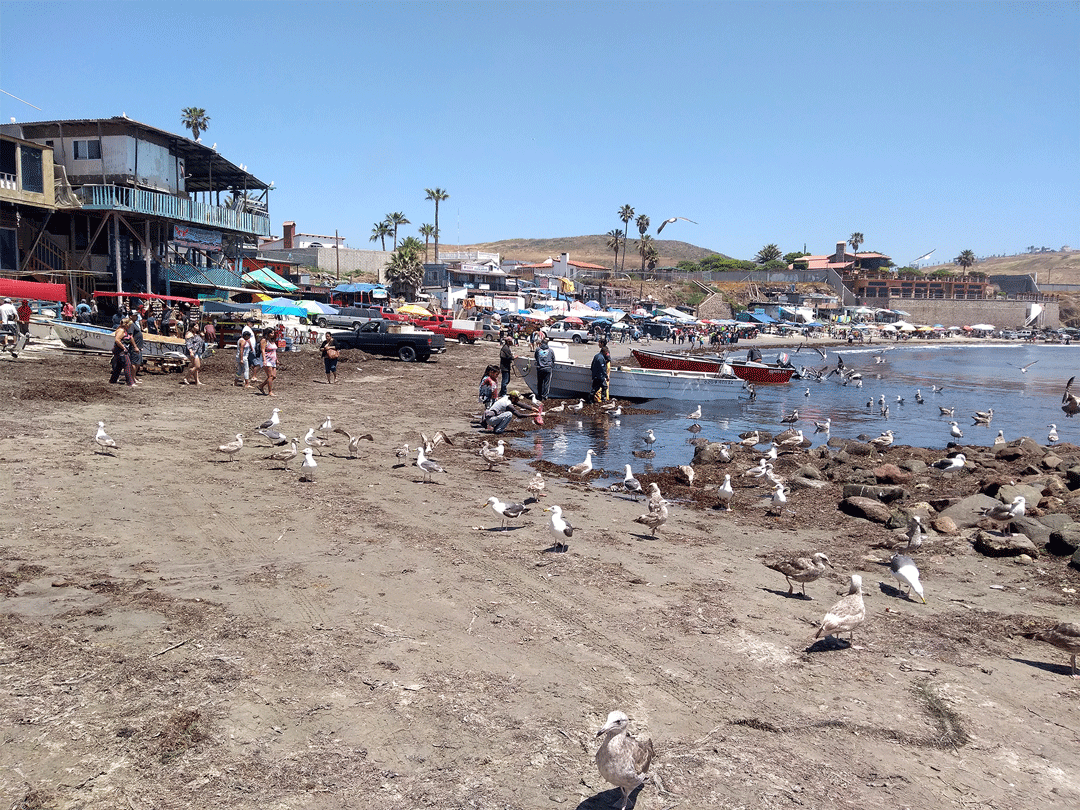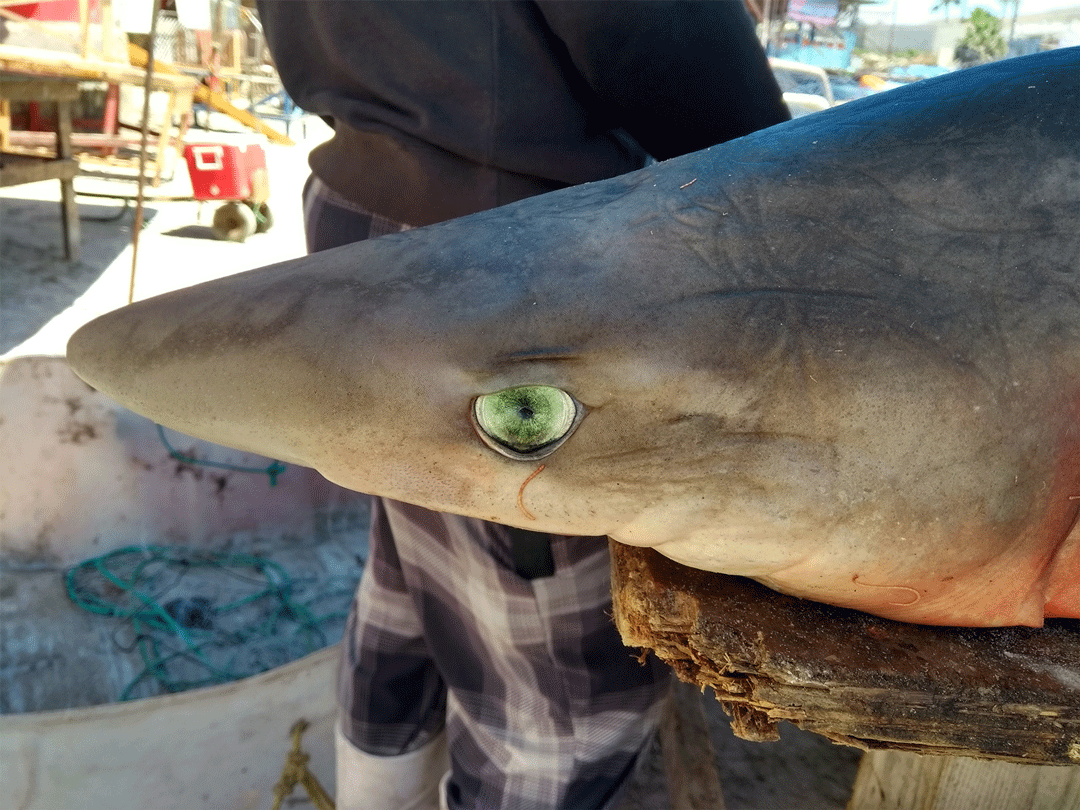Discovering Popotla, the peculiar fishing village in the Baja California Peninsula.
Many fishing camps in the Baja California peninsula are located in remote sites unpopulated and with little or no infrastructure (e.g., electricity and running water); very few fishing camps are associated with urban and suburban centres. For the latter, the first time I visited Popotla, I was not prepared to see a small fishing village full of movement, with a great number of restaurants, a retail fresh fish market, and a tourist beach. Popotla is located in Rosarito, Baja California, Mexico, at 28 km from the border with California, USA. In this bustling place, tourist, surfers, fish buyers, and fishers converge. The natural scenery of Popotla is the tourist´s cars driving on the beach, craft, and snack vendors, people taking photos, vendors cleaning fish, and fishermen’s pickups lifting the small vessels (commonly called “pangas”) after an artisanal fishing trip.

Popotla, Baja California, Mexico general view. Photo © Luz Erandi Saldaña-Ruiz
In this rustic and picturesque place, you can buy the freshest seafood. The market consists of simple wood tables with tarps, with fresh seafood on display and very skilled vendors cleaning the fish. The main attraction of this market are lobsters, sea urchins, and spider crab (named locally as martian crab for their strange appearance). And you can commonly find scorpionfishes, yellowtail, white weakfish, flounders, sharks, and rays. Most fishers have retailing arrangements, that is, a group of retailers that sell fish to the final consumers. Nevertheless, sometimes you can buy the fish as soon the pangas arrive at the beach in a direct deal with the fishermen. Several people, including buyers, restaurant owners, fish vendors, curious tourists, and sometimes scientist with a Save Our Seas Foundation project doing surveys, approaches to the pangas to see the catch of the day.

Popotla fresh seafood market. Photo © Luz Erandi Saldaña-Ruiz
The most common sharks and rays found at Popotla are the tope shark, shortfin mako, pacific spiny dogfish, and the California bat ray. Another peculiarity of Popotla is that sometimes we can find uncommon deep-water cartilaginous fishes, species like prickly shark, Six-gill shark, and chimaeras. Of these species very little is known about their biology and their interaction with the fisheries; and the possibility of finding these species in this place gave us an excellent opportunity to develop a project to describe this fishery and their interaction with cartilaginous fishes, especially with prickly sharks and chimaeras. Thanks to our project supported by the Save Our Seas Foundation, we are building a baseline for future management and conservation of these species, and we are also creating awareness of these species to scientist and the general public.

Tope shark at Popotla market. Photo © Luz Erandi Saldaña Ruiz
